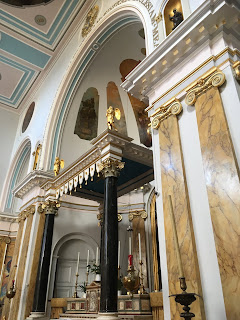The phrase ‘Sweet Fanny Adams’ came into popular usage in Victorian England to mean nothing or very little, but was there a real Fanny Adams? The answer is yes, and her story is anything but sweet. The phrase also appears today as "sweet F.A. Maybe we should think before using this saying ...... and this is why.
Fanny Adams born on 30 April 1859 was an English girl who was murdered by solicitor's clerk Frederick Baker in Alton, Hampshire on 24 August 1867. The murder itself was extraordinarily brutal and caused a national outcry in the United Kingdom. On that day Fanny was out playing with her friend Minnie Warner and her sister Lizzie Adams.
As the girls were walking towards Flood Meadows and into a hop garden they met Frederick Baker, a 24-year-old solicitor's clerk. He was wearing a frock coat, light-coloured trousers and a tall hat on his head. Baker had moved to work and live in Alton about two months prior, which allegedly made him unfamiliar with the town.
Baker gave Minnie and Lizzie three halfpence to spend on sweets and Fanny another halfpenny. The girls had seen Baker before at church meetings and were thus unconcerned to take money from him. Baker then watched the girls run up and down The Hollow (a lane leading to the nearby village of Shalden) as they played and ate the blackberries he had picked for them.
An hour later, Lizzie and Minnie decided that they had had enough and opted to go home. Baker then approached Fanny and asked her to accompany him to Shalden. Fanny refused, and it was then Baker picked her up and carried her into the nearby hop garden near her home.
She was then brutally murdered and her body cut into several pieces, with some parts never being found. Further investigations suggested that two small knives were used for the murder, but it was later ruled they would have been insufficient to carry out the crime and that another weapon must have been used.
Sometime between 7-8pm the discovery was made by a labourer
Thomas Gates who found the head of Fanny Adams stuck on two hop poles while he was tending to the crops. An ear had been severed from the head which had two large cuts, from mouth to ear across the temple. Further investigation discovered the remains of the child; the head, arms and legs were separated from the trunk. There were three incisions on the left side of the chest, and a deep cut on the left arm, dividing her muscles. Fanny's forearm was cut off at the elbow joint, and her left leg nearly severed off at the hip joint with her left foot cut off at the ankle point. Her right leg was torn from the trunk, and the whole contents of her pelvis and chest completely removed. Five further incisions had been made on the liver, the heart cut out, and vagina missing. Both of her eyes were cut out and found in the nearby River Wey.
Baker was eventually found guilty and on Christmas Eve 1867 Baker was hanged outside Winchester Gaol. The crime had become notorious and a crowd of 5,000 attended the execution. This was the last public execution held at that gaol.
Fanny Adams was buried in Alton cemetery Hampshire. Her headstone was erected by voluntary subscription, reads:
Sacred to the memory of Fanny Adams aged 8 years and 4 months who was cruelly murdered on Saturday August 24th 1867.
Fear not them which kill the body but are not able to kill the soul but rather fear Him which is able to destroy both body and soul in hell. Matthew 10 v 28
The image of a young girl which appears to have a studio feel to it, in this instance is supposedly used to capture the innocence in a child. There was an alternative photo which is also supposed to be Fanny Adams, which I have included in this post.
Such a horrific sad story which I only learnt this month.
God Bless Fanny Adams

















































